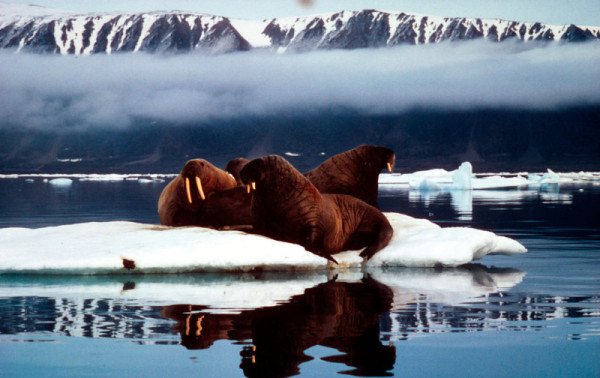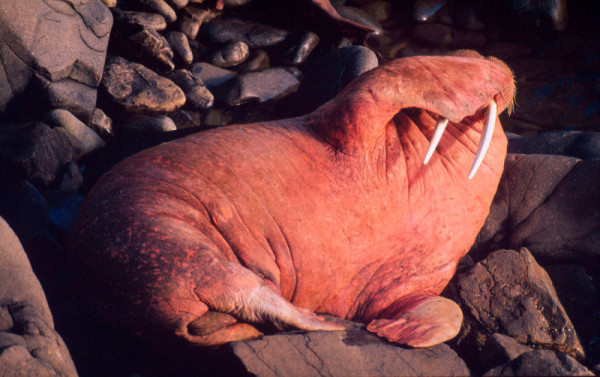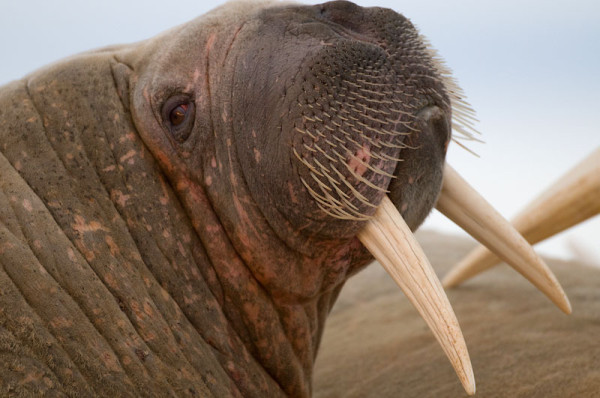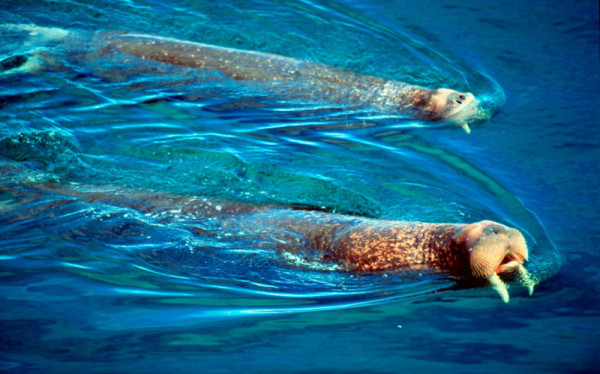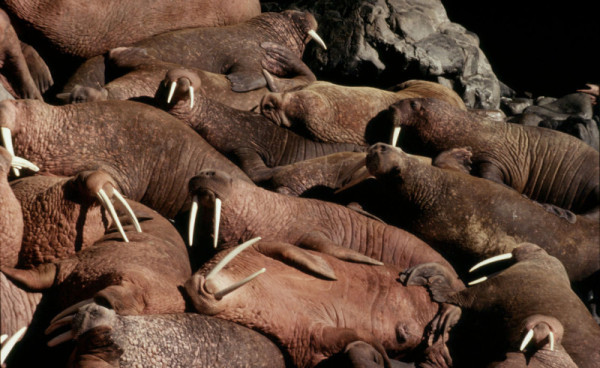Life in the Arctic as a walrus
The magnificent and mighty tusked walrus can be found around the Arctic. The word walrus is thought to be derived from an Old Norse word meaning “horse-whale.” There are three different sub-species of walruses, the Pacific walrus is found around Alaska and north-east Russia. The Atlantic walrus is found in the Canadian Arctic, the waters of Greenland, Svalbard and the western portion of the Russian Arctic. And, the Laptev walrus is restricted to the Laptev Sea. Now let’s dive in and see what it’s like for a walrus in the Arctic.
The walrus is a fin-footed mammal, and is related to seals and sea lions. Their skin is a dark brown and is covered by a thin layer of small coarse hairs.
Their remarkable tusks are used for keeping breathing holes in the ice open, fighting and to help get themselves out of the water and on to an ice floe.
Walruses migrate with the moving ice floes, but never venture far from the coast as they feed in shallow waters. They can swim to a depth of around 100 meters to feed. Female walruses and their young rest on floating sea ice, and dive to the sea floor for food.
Life in the Arctic is changing more than ever for walruses.
Climate change isn’t just melting the walrus’ home – it’s introducing new threats. The sea ice is melting which forces walruses ashore into crowded haul-outs, sometimes having deadly results due to lack of food or stampedes.
Ships can easily navigate ice-free waters in Canada and Russia, and oil and gas projects are moving north. Industrial development is increasing and can cause toxic spills and disturbances to walrus’s homes.
The retreat of sea ice caused by climate change forces walruses ashore, with deadly consequences. As Arctic sea ice recedes the coasts due to warmer temperatures caused by climate change, walruses – including females and their babies – are forced to take refuge on land. The mass “haul outs” can lead to violent and deadly stampedes, especially to young walruses.
Our Arctic work depends on your support and right now you can have double the impact. Donate now and a generous donor will match your gift (the first $130,000 in donations will be matched).
Learn more about WWF’s important arctic work at wwf.ca/polarbearweek.

